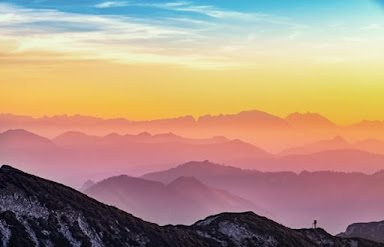Assignment # 8 - Color Temperature
Color Temperature is a characteristic of light that we are not always aware of. Our eyes and brains are able to see colors as they are in every lighting situation, but light gives off color. Our cameras need to be adjusted in order for them to reproduce color video the same way our brains see the world. We white balance the cameras (sometimes black balance) in order to give the camera a reference so it can reproduce colors accurately in our final video.
Beginning students - Please study the Power Point and learn the concept of Color Temperature and please complete the worksheet below the Power Point and turn that in to me, sharing it with me on Google Docs (turn link sharing ON and be sure to get a "shareable link") or you can email it to me as an attachment. I will grade it and let you know what you got. Please turn this in by tomorrow, May 5th.
You can also study the website and self test at www.cybercollege.com. You can click on the TV Production drop down menu and go to the Lighting modules to read and self test.
Advanced students - Please continue to work on your documentary (See Assignment #7)
I have decided to extend the deadline for this assignment to Monday, May 13th. Let me know if you have any questions.
Lighting
Color Temperature
Quick Quiz
Name____________________
Class____________________
Date____________________
1.
Daylight color temperature changes with
a.
time of day
b.
latitude and longitude
c.
varying cloud cover
d.
all of the above
e.
none of the above is true
2.
Compared to sunlight, incandescent light
a.
has more blue light
b.
has more reddish-yellow light
c.
has a higher color temperature
d.
all of the above are true
e.
none of the above is true
3.
Instead of a relatively smooth mix of colors from
infrared to ultraviolet this light source has sharp bands or spikes of color,
primarily in the blue-green areas.
a.
flourescent light
b.
incandescent light
c.
HMI lights
d.
All of the above
e.
None of the above
4.
Sunlight is “redder” during sunrised and sunsets
because
a.
the sun is closer to the earth in the mornings and
evenings
b.
the air through which the light passes is, itself,
redder in the mornings and evenings
c.
the color of the sun, itself, naturally changes in the
morning and evening
d.
Sunlight must travel through more of the earth’s
atmosphere at these times
e.
None of the above
5.
Approximate color consistency is
a.
the mixing of two colors
b.
the color standard by which we measure light intensity
c.
our eyes ability to “white balance”
d.
the white balance that our camera does when put in auto
mode
e.
none of the above
6.
What is the color standard for incandescent lamps
(artificial light) used in studios?
a.
1,000 Kelvin
b.
3,200 Kelvin
c.
5,600 Kelvin
d.
6,500 Kelvin
7.
What is the color standard for average daylight?
a. 1,000
Kelvin
b. 3,200
Kelvin
c. 5,600
Kelvin
d. 6,500
Kelvin



